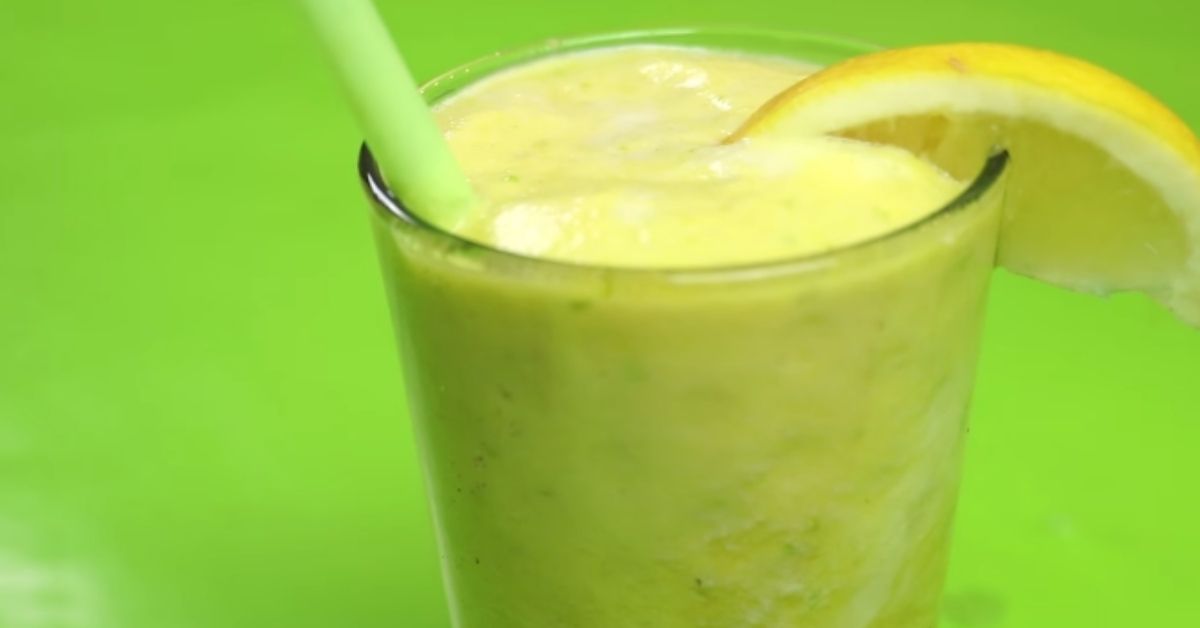Imagine starting your day with a refreshing glass of juice that not only tantalizes your taste buds but also helps manage your allergies. Juicing is a fantastic way to boost your intake of vitamins and antioxidants, essential warriors in your battle against allergens. With the right ingredients, your morning drink can transform into a powerful ally, helping to reduce inflammation and strengthen your immune system.
Whether you’re dealing with seasonal sniffles or year-round irritants, incorporating specific fruits and vegetables into your diet can make a significant difference. From the vibrant, vitamin C-packed oranges to the robust, anti-inflammatory ginger, each ingredient is selected to help alleviate allergy symptoms. Ready to turn your kitchen into your new favorite juice bar? Let’s dive into some delicious and beneficial juice recipes that are tailored specifically for allergy relief.
Ingredients
To maximize the allergy-relieving benefits discussed earlier, it’s crucial to choose the right mix of fruits and vegetables for your juice. Here’s a list of essential ingredients that harness the power of natural properties to help soothe your allergy symptoms.
Allergy-Soothing Ingredients
- Oranges (2 large) – Rich in Vitamin C, which acts as a natural antihistamine.
- Ginger (1 inch piece) – Known for its anti-inflammatory properties.
- Local Honey (1 tablespoon) – May help build immunity against local allergens.
- Apples (2 medium) – Include quercetin which reduces histamine production.
- Pineapple (1 cup chunks) – Contains bromelain, an enzyme that can help reduce nasal swelling and irritation.
- Turmeric (1/2 teaspoon) – Has curcumin, which is known for its potent anti-inflammatory effect.
- Fresh Mint Leaves (a handful) – Adds a refreshing taste and additional anti-inflammatory benefits.
- Lemon (1 whole) – Boosts immunity and enhances flavor, giving a tangy zest to your juice.
- Cucumber (1 small) – Adds hydration and a mild, soothing flavor.
- Celery (2 stalks) – Offers a saltiness that balances the sweetness of fruits and boosts the electrolyte content.
- Coconut Water (1 cup) – Provides a hydrating base that enriches the overall flavor and adds essential minerals.
Equipment Needed
To create these nutrient-packed juices for allergy relief, you will need a few basic yet essential pieces of kitchen equipment. Ensuring you have the right tools can make the juicing process efficient and enjoyable.
Juicer
A high-quality juicer is the cornerstone of any juicing regimen. Opt for a masticating juicer if you can, as it helps to preserve the nutrients and enzymes in your fruits and vegetables better than centrifugal models. This type of juicer also allows you to extract juice from leafy greens and wheatgrass, which are excellent for immune support.
Blender
For some recipes that include thicker ingredients or require a smoothie-like texture, a powerful blender is necessary. This tool will allow you to incorporate ingredients like pineapple, which can be tricky to juice due to its fibrous nature.
Chopping Board and Sharp Knife
Prepare your ingredients quickly and safely with a sturdy chopping board and a sharp knife. You’ll need these to chop fruits like apples and vegetables like celery into manageable pieces before juicing or blending.
Peeler
A good peeler can save time and effort, especially when working with ginger or cucumbers, making your prep work a breeze.
Glass Storage Containers
If you plan to make juice in batches, having a set of glass storage containers with airtight lids is crucial. Glass is preferred over plastic as it doesn’t harbor bacteria or leak harmful chemicals into your juice. It also keeps your juice fresh longer.
Measuring Cups and Spoons
Accurate measurements are key in following recipes correctly and achieving the intended flavor and nutritional benefits. Ensure you have a set of measuring cups and spoons handy.
With these tools ready, you’re set to start making delicious, allergy-soothing juices that can help you manage your symptoms more naturally and deliciously.
Instructions
Ready to turn your kitchen into an allergy-relief juice bar? Follow these easy steps to create juices that not only taste great but also help manage your allergy symptoms effectively.
Juice Preparation
- Wash and Prepare Ingredients:
Begin by thoroughly washing all fruits and vegetables to remove any pesticides or impurities. Use a sharp knife to peel and cut the ingredients into sizes that will easily fit into your juicer or blender. - Juicing Citrus Fruits:
When juicing oranges or lemons, ensure to remove the peel as it can add a bitter taste to your juice. However, keep a bit of the white pith intact as it contains additional vitamins and nutrients. - Incorporating Ginger and Turmeric:
Peel ginger and turmeric roots with a peeler before adding them to your juicer. Since these ingredients are potent, a small piece around one to two inches is enough to infuse your juice with their health benefits. - Using Local Honey:
Add a tablespoon of local honey into the blend to enhance flavor and leverage its therapeutic properties. Ensure to add honey to the juice after all other ingredients have been processed to preserve its natural enzymes and benefits.
- Combining Ingredients:
Place all your prepped fruits, vegetables, and roots into the blender jug. If you’re using a juicer, start with softer ingredients like oranges or cucumbers and then move to harder ones like apples and carrots. - Smooth Consistency:
After adding all your ingredients, blend at high speed for about 30-60 seconds until the mixture is smooth. If the consistency is too thick, adjust by adding a bit of water or coconut water to achieve the desired texture. - Straining for Purity:
To ensure your juice is free from pulp and fibers, strain the mixture using a fine mesh sieve or a nut milk bag into a large bowl. Press the solids with a spoon to extract as much liquid as possible. - Final Touches:
Taste the juice and adjust the sweetness or tanginess by adding more honey or a squeeze of lemon juice. Once satisfied, transfer the juice into glass storage containers and keep refrigerated. Enjoy your fresh homemade juice within 24 hours for optimum benefits.
Serving Suggestions
After mastering the art of crafting allergy-relief juices using fresh, inflammation-reducing ingredients, you’ll want to ensure that each serving maximizes both flavor and therapeutic benefits. Here are some top tips for serving and enjoying your homemade juices:
Serve Chilled
For optimal refreshment, serve your juices chilled. You can refrigerate your juice for at least an hour before serving or use a few ice cubes to cool it quickly. This not only enhances the flavors but also provides a more refreshing experience, especially during warmer days.
Mix Before Serving
Natural separation might occur if your juice sits in the fridge for a while. Simply give it a good shake or a stir to mix everything evenly. This ensures that you get a consistent taste and benefit from all the nutrients in every sip.
Use Proper Glassware
Pour your juice into a clear glass to appreciate the vibrant colors derived from fruits like oranges, apples, and pineapples. A tall glass is usually preferred as it makes the serving visually appealing and easier to drink.
Pairing with Meals
Your allergy-soothing juice can also accompany meals, especially breakfast. The juices are light and digestible, making them perfect alongside morning favorites like oatmeal or yogurt. This not only rounds out the meal but also kickstarts your day with a nutrient-rich start.
Single Servings vs. Batch Preparation
If you prefer convenience, consider preparing a larger batch of juice and storing it properly in the fridge. Always remember to consume the juice within 24 hours to enjoy its maximum benefits. Single servings are great for ensuring freshness and immediate consumption, but batch preparation saves time in the morning or when you need a quick boost.
Storage Tips
To maximize the freshness and maintain the nutritional value of your homemade allergy-relief juices, proper storage is key. Follow these practical steps to ensure your juices stay as beneficial as when you first made them.
Choose the Right Containers
Select glass containers for storing your juice. Glass does not absorb flavors and prevents contaminants, unlike some plastic containers, which can leach chemicals into your juice. Make sure the containers are airtight to avoid oxidation, which can degrade nutrients. For individual servings, use small jars that hold just enough juice for one serving to minimize exposure to air after opening.
Refrigerate Immediately
Cool temperatures slow the growth of bacteria. After juicing, pour your juice into your chosen containers and place them in the refrigerator immediately. Keeping the juice cold preserves its freshness and slows down the degradation process.
Keep It Brief
Store your allergy-relief juice in the refrigerator for no more than 24 hours. The fresher the juice, the better the taste and the more potent its anti-inflammatory and immune-boosting properties. If you cannot consume the juice within this time frame, consider freezing it.
Freezing for Longevity
If you need to store the juice for longer than 24 hours, freezing is a viable option. Freeze the juice in an airtight container or specialized freezer-safe bags. Be sure to leave some space at the top of the container as liquids expand when frozen. Thaw your juice in the refrigerator overnight when ready to consume. Keep in mind, though, that freezing might slightly alter the taste and texture of the juice.
By following these storage tips, you can ensure your allergy-relief juices remain fresh, tasty, and nutritious, ready to soothe your symptoms whenever needed.
Conclusion
Embracing the power of juicing can significantly enhance your allergy management routine. With the right mix of ingredients like oranges, ginger, and local honey, you’re not just treating your taste buds—you’re also fortifying your body’s defenses. Remember to invest in quality juicing equipment to make the process seamless and ensure your juices retain their nutritional value. By incorporating these delicious, nutrient-packed juices into your daily diet, you’ll not only alleviate allergy symptoms but also boost your overall health. Cheers to a refreshing way to tackle allergies!
Related Posts:
- Top Morning Juicing Recipes for a Refreshing Start: Tips & Ideas
- Refresh Your Summer: Top Juicing Recipes for a Healthy Season
- Refreshing Radish Juicing Recipes: Boost Health with Flavorful Drinks
- Ultimate Migraine Juice Recipe: Natural Relief with Fresh Ingredients
- Ultimate Hot Shot Recipe: Boost Your Health with Ginger, Lemon & Cayenne
- How to Make and Serve Fresh Lemongrass Juice: Tips & Benefits
- Bok Choy Juicing: Ultimate Guide to Ingredients, Prep, and Storage
- Chia Seeds and Juice: A Refreshing Guide to Nutritious Drinks
- Top Juice Recipes for Allergies: Natural Relief with Fruits & Veggies


